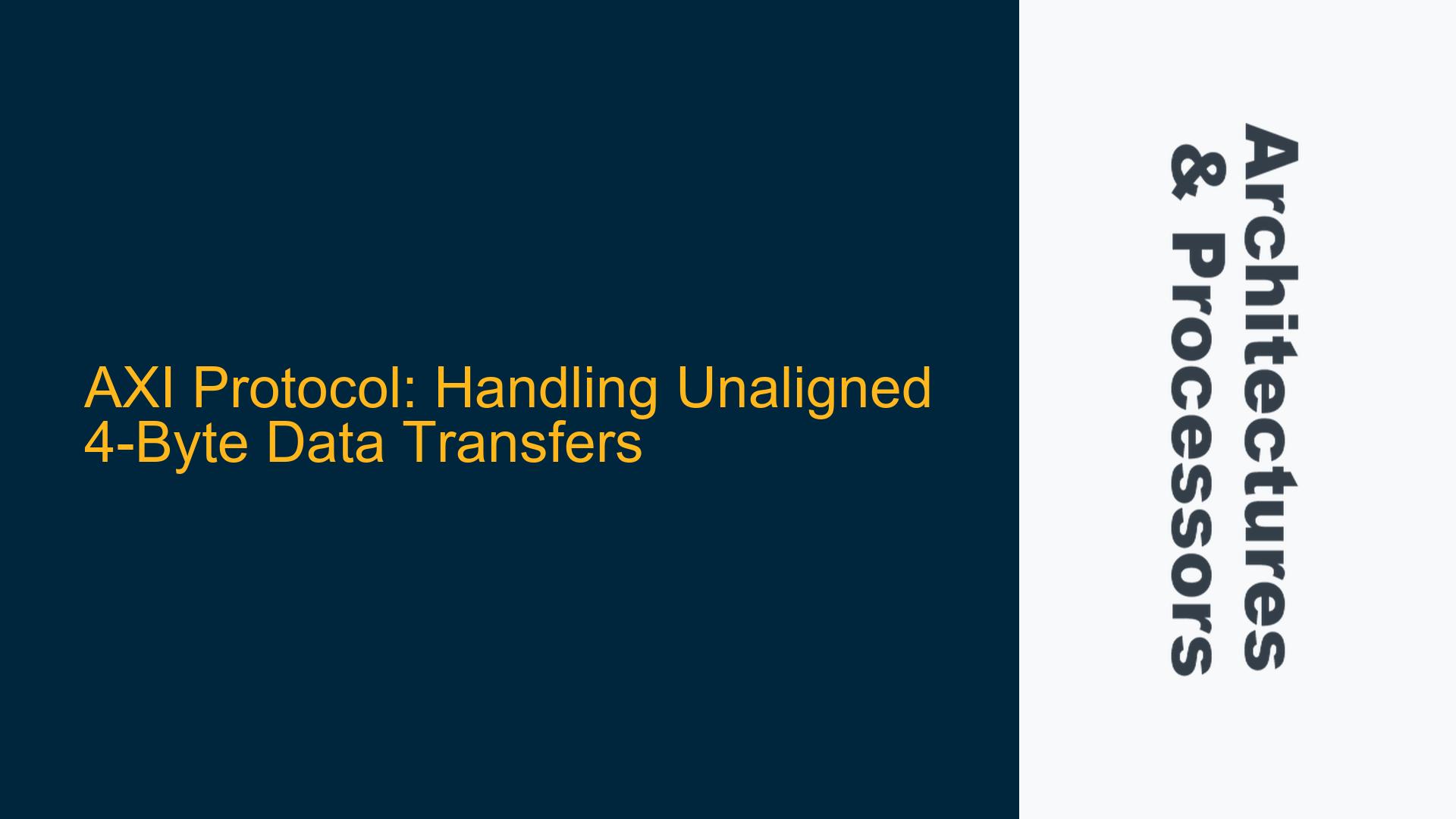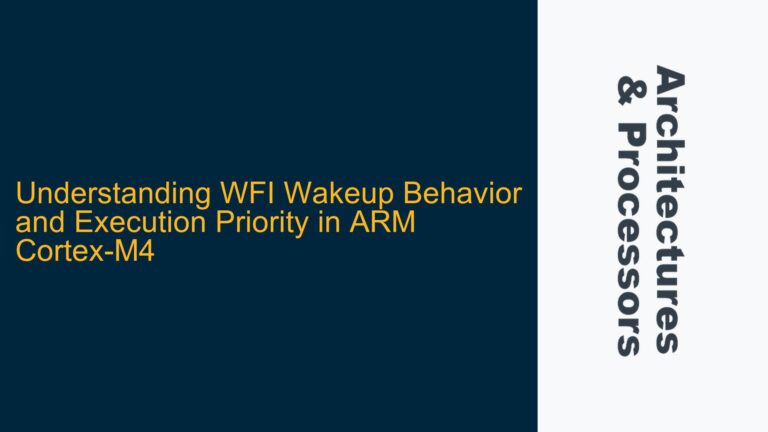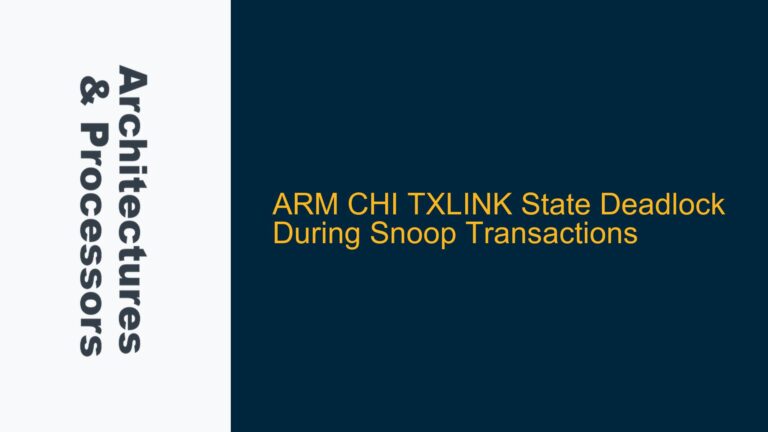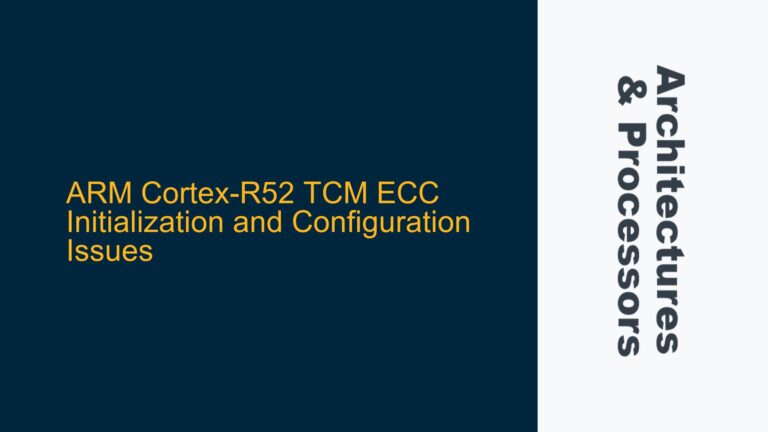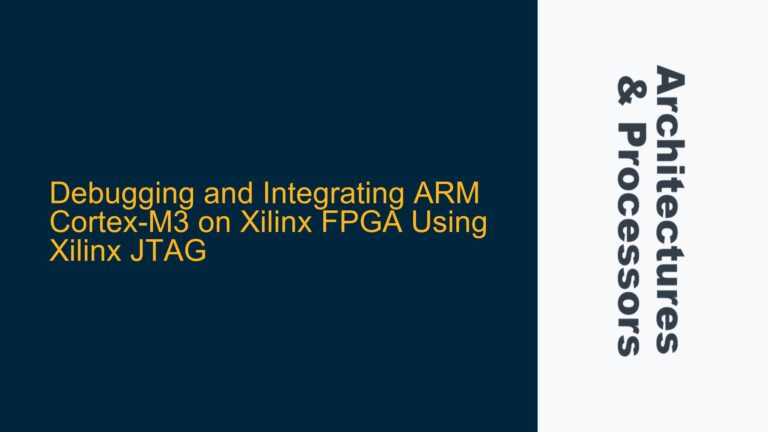Unaligned 4-Byte Data Transfer Behavior in AXI Protocol
In the ARM AMBA AXI protocol, data transfers are typically aligned to the natural boundaries of the data bus width. However, scenarios often arise where data transfers are unaligned, particularly when the starting address does not match the natural alignment boundary of the data size being transferred. For instance, when transferring 4 bytes of data on a 32-bit bus, the starting address might be 0x03 or 0x07, which are not aligned to the 4-byte boundary (0x00, 0x04, 0x08, etc.). This misalignment raises questions about how the AXI protocol handles such transfers, specifically which byte of the 4-byte data is stored at the unaligned address and what happens to the remaining bytes.
The AXI protocol defines specific rules for handling unaligned transfers, which are crucial for ensuring data integrity and correct system behavior. When a 4-byte transfer is initiated with an unaligned starting address, the AXI protocol must determine how to map the data bytes to the memory locations. This involves understanding the relationship between the address, the data bus width, and the transaction attributes such as AWSIZE (transfer size) and AWADDR (address).
In the case of a 32-bit data bus, the AXI protocol treats the address space as a sequence of 4-byte words, where each word starts at an address that is a multiple of 4 (0x00, 0x04, 0x08, etc.). When a transfer is initiated with an unaligned address, the protocol must map the data bytes to the correct locations within these 4-byte words. This mapping is influenced by the value of the least significant bits (LSBs) of the address, which determine the offset within the 4-byte word.
For example, if the starting address is 0x03, the LSBs of the address (0x03) indicate an offset of 3 bytes within the 4-byte word. This means that the first byte of the 4-byte data will be stored at the 3rd byte position within the 4-byte word starting at 0x00. The remaining bytes of the 4-byte data will be stored in the subsequent bytes of the 4-byte word, wrapping around to the next 4-byte word if necessary.
Similarly, if the starting address is 0x07, the LSBs of the address (0x07) indicate an offset of 3 bytes within the 4-byte word starting at 0x04. In this case, the first byte of the 4-byte data will be stored at the 3rd byte position within the 4-byte word starting at 0x04, and the remaining bytes will be stored in the subsequent bytes of the 4-byte word, wrapping around to the next 4-byte word if necessary.
The AXI protocol also defines how to handle the remaining bytes of the 4-byte data that do not fit within the current 4-byte word. These bytes are typically stored in the next 4-byte word, starting at the beginning of that word. This ensures that all bytes of the 4-byte data are stored in the correct memory locations, even when the transfer is unaligned.
Understanding this behavior is crucial for designing and verifying AXI-based systems, as it ensures that data is correctly transferred and stored in memory, even in the presence of unaligned addresses. This knowledge is particularly important when debugging issues related to data corruption or incorrect data storage, as it allows engineers to identify and resolve issues related to unaligned data transfers.
Misalignment Due to Incorrect AWSIZE and AWADDR Configuration
The primary cause of unaligned data transfers in the AXI protocol is the incorrect configuration of the transaction attributes, specifically the AWSIZE (transfer size) and AWADDR (address) signals. The AWSIZE signal indicates the size of the data transfer, while the AWADDR signal specifies the starting address of the transfer. When these signals are not properly configured, the resulting data transfer may be unaligned, leading to potential issues in data storage and retrieval.
In the case of a 4-byte data transfer on a 32-bit bus, the AWSIZE signal should be set to 0x2, indicating a 4-byte transfer. However, if the AWADDR signal is set to an address that is not aligned to a 4-byte boundary (e.g., 0x03 or 0x07), the resulting transfer will be unaligned. This misalignment occurs because the starting address does not match the natural alignment boundary of the data size being transferred.
The AXI protocol relies on the correct configuration of the AWSIZE and AWADDR signals to determine how to map the data bytes to the memory locations. When these signals are incorrectly configured, the protocol may misinterpret the intended data transfer, leading to incorrect data storage. For example, if the AWSIZE signal is set to 0x2 (4 bytes) but the AWADDR signal is set to 0x03, the protocol will interpret the transfer as starting at the 3rd byte position within the 4-byte word starting at 0x00. This results in the first byte of the 4-byte data being stored at the 3rd byte position, and the remaining bytes being stored in the subsequent bytes of the 4-byte word, wrapping around to the next 4-byte word if necessary.
This behavior can lead to data corruption or incorrect data storage if the system is not designed to handle unaligned transfers. For example, if the system expects the data to be stored starting at the beginning of a 4-byte word, the unaligned transfer will result in the data being stored at an offset within the 4-byte word, potentially overwriting existing data or leaving gaps in the memory.
To avoid these issues, it is crucial to ensure that the AWSIZE and AWADDR signals are correctly configured for each data transfer. This involves verifying that the starting address is aligned to the natural boundary of the data size being transferred. For a 4-byte transfer on a 32-bit bus, the starting address should be a multiple of 4 (0x00, 0x04, 0x08, etc.). If the starting address is not aligned, the system should either adjust the address to align it or handle the unaligned transfer appropriately.
In addition to configuring the AWSIZE and AWADDR signals correctly, it is also important to consider the impact of unaligned transfers on system performance. Unaligned transfers can result in additional memory accesses, as the protocol may need to access multiple 4-byte words to store the data. This can increase the latency of the data transfer and reduce overall system performance. Therefore, it is important to minimize the occurrence of unaligned transfers by ensuring that data is aligned to the natural boundaries of the data bus width.
Correcting Unaligned Data Transfers with AXI Protocol Rules
To address the challenges posed by unaligned data transfers in the AXI protocol, it is essential to follow the protocol rules and implement appropriate corrective measures. These measures include adjusting the starting address to align it with the natural boundary of the data size being transferred, handling unaligned transfers appropriately, and verifying the correct storage of data in memory.
When an unaligned transfer is detected, the system should first attempt to adjust the starting address to align it with the natural boundary of the data size. For example, if a 4-byte transfer is initiated with a starting address of 0x03, the system can adjust the address to 0x00, which is aligned to the 4-byte boundary. This adjustment ensures that the data is stored starting at the beginning of a 4-byte word, avoiding potential issues with data corruption or incorrect storage.
However, in some cases, adjusting the starting address may not be feasible, particularly if the unaligned address is required for specific system functionality. In such cases, the system must handle the unaligned transfer appropriately, ensuring that the data is correctly mapped to the memory locations. This involves understanding the relationship between the address, the data bus width, and the transaction attributes, and implementing the necessary logic to map the data bytes to the correct locations within the 4-byte words.
For example, if a 4-byte transfer is initiated with a starting address of 0x03, the system should map the first byte of the data to the 3rd byte position within the 4-byte word starting at 0x00. The remaining bytes of the data should be mapped to the subsequent bytes of the 4-byte word, wrapping around to the next 4-byte word if necessary. This ensures that all bytes of the data are stored in the correct memory locations, even when the transfer is unaligned.
To verify the correct storage of data in memory, the system should implement appropriate checks and validation mechanisms. These mechanisms should ensure that the data is stored at the correct locations within the 4-byte words, and that no data is lost or corrupted during the transfer. This can be achieved through the use of simulation and verification tools, which allow engineers to monitor the data transfer and verify the correct storage of data in memory.
In addition to implementing corrective measures, it is also important to consider the impact of unaligned transfers on system performance. Unaligned transfers can result in additional memory accesses, as the protocol may need to access multiple 4-byte words to store the data. This can increase the latency of the data transfer and reduce overall system performance. Therefore, it is important to minimize the occurrence of unaligned transfers by ensuring that data is aligned to the natural boundaries of the data bus width.
By following the AXI protocol rules and implementing appropriate corrective measures, engineers can ensure that unaligned data transfers are handled correctly, avoiding potential issues with data corruption or incorrect storage. This knowledge is crucial for designing and verifying AXI-based systems, as it ensures that data is correctly transferred and stored in memory, even in the presence of unaligned addresses.
Conclusion
Handling unaligned data transfers in the AXI protocol requires a deep understanding of the protocol rules and the relationship between the address, the data bus width, and the transaction attributes. By correctly configuring the AWSIZE and AWADDR signals, adjusting the starting address to align it with the natural boundary of the data size, and implementing appropriate corrective measures, engineers can ensure that unaligned data transfers are handled correctly, avoiding potential issues with data corruption or incorrect storage. This knowledge is crucial for designing and verifying AXI-based systems, as it ensures that data is correctly transferred and stored in memory, even in the presence of unaligned addresses.
